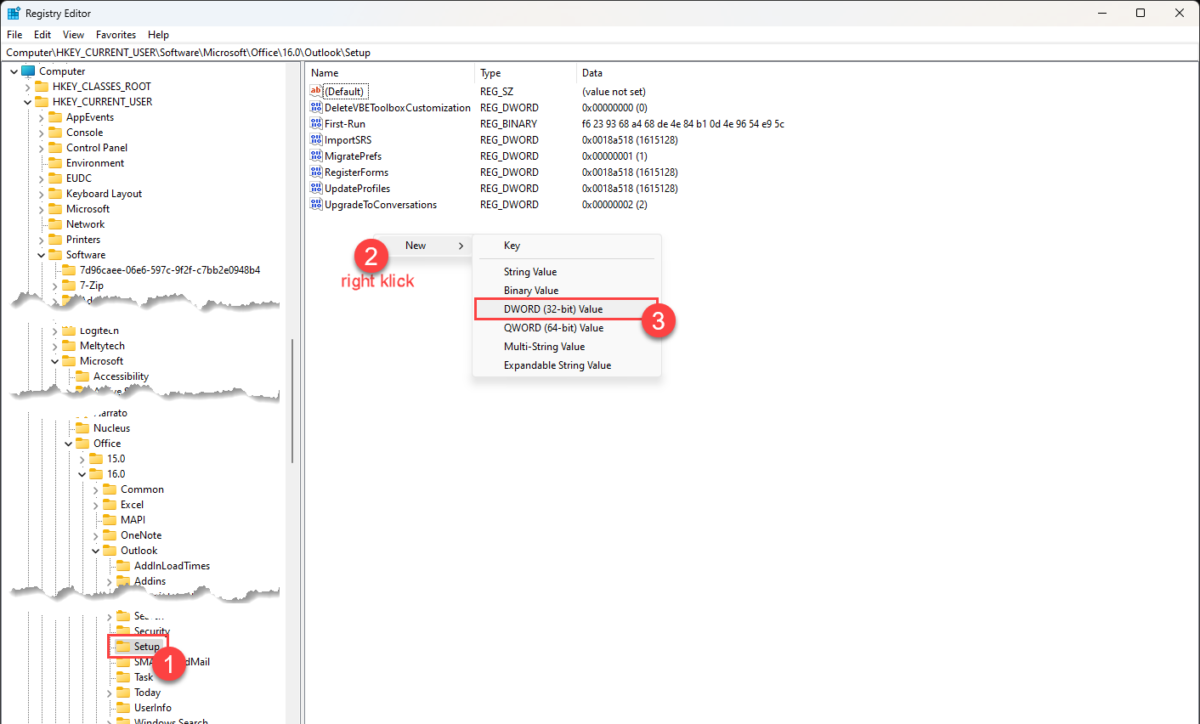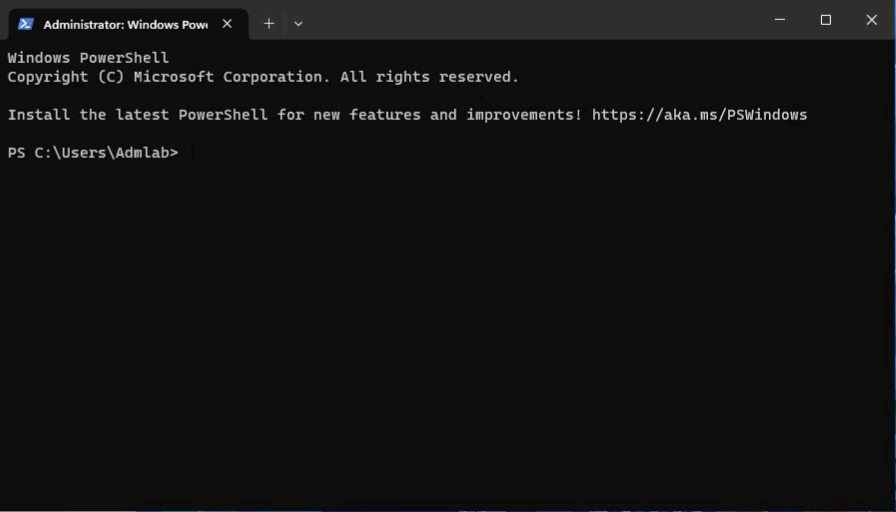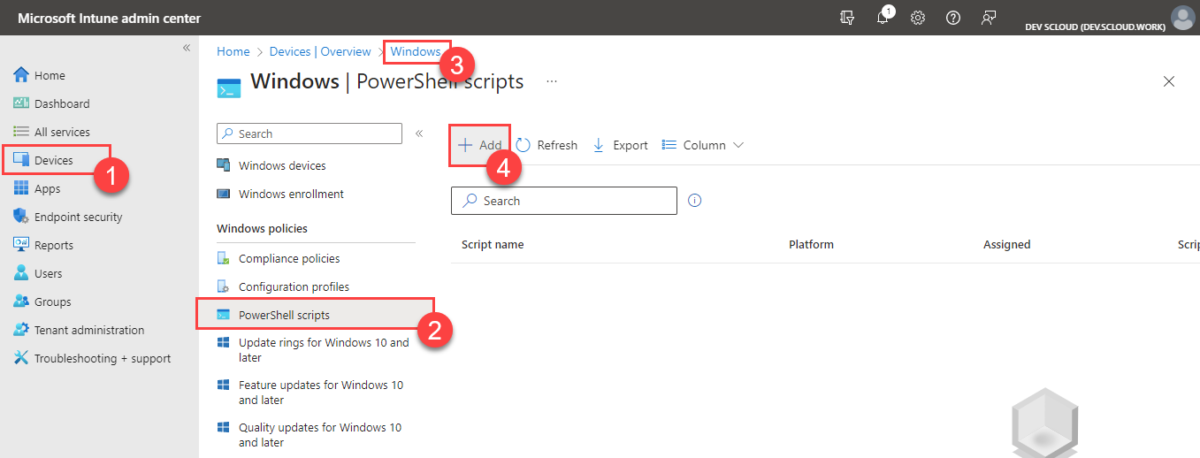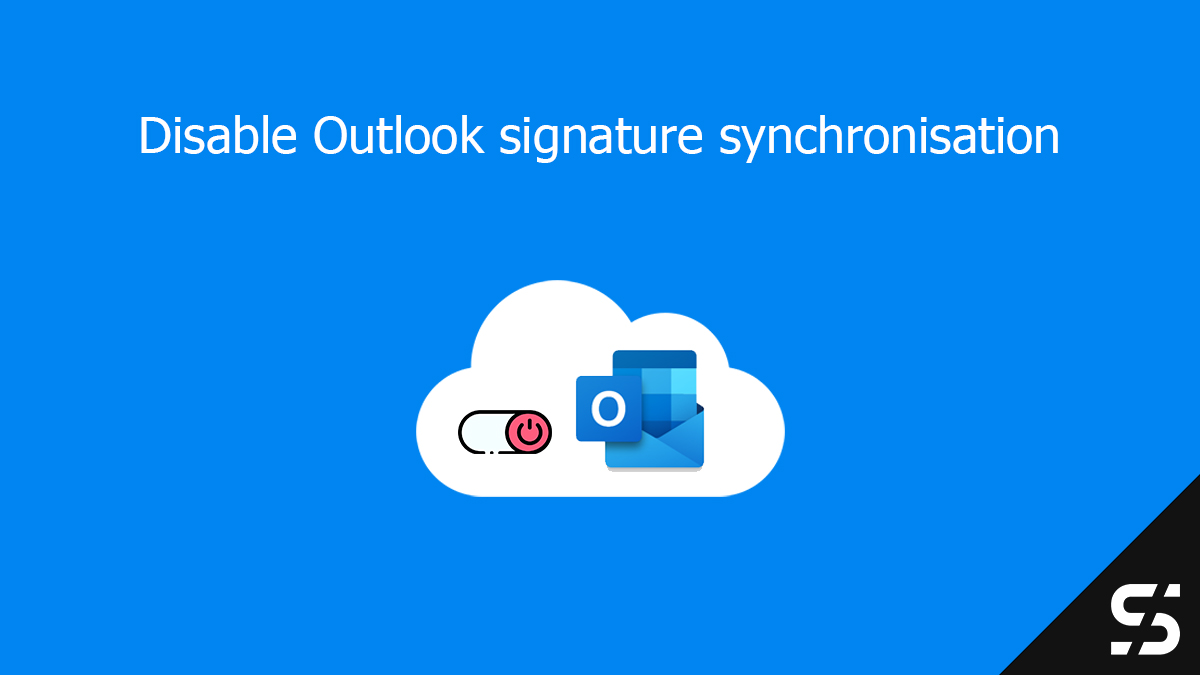From October 2022 (Preview) / April 2023 (Current Channel), Microsoft Outlook and Exchange Online will offer the option of automatically synchronizing signatures. The function will be activated automatically and the user will be made aware of it by a small popup.
However, it can happen that you want to disable the signature synchronization on certain devices. In this blog post we will delve deeper into this topic and I will show you what options you have to disable Outlook signature synchronization.
Table of Contents
- Reasons to disable Outlook signature synchronization
- Disable via registry (manual)
- Disable via PowerShell
- Disable via PowerShell / Intune
- Summary
Reasons to disable Outlook signature synchronization
There are several reasons why you might want to disable Outlook signature sync. Here are some of the most common reasons:
- Shared mailbox: For licensed shared mailboxes that are fully onboarded, syncing will overwrite your signature every time someone else who also has the mailbox onboarded changes it.
- 3rd party: Some third-party plugins compatible with Outlook may cause signature synchronization problems. So if you have a plugin installed that affects or changes your signature, disabling syncing can prevent unexpected changes to your signature from being made on other devices.
- personal preference: You may want to use a different signature on certain devices than others. Disabling synchronization allows you to use different signatures on different devices.
- Professional reasons: If you use multiple accounts and work on different devices, you may want to use different signatures for different accounts. Disabling sync allows you to use different signatures on different devices.
Disable via registry (manual)
Unfortunately, there is no Settings Catalog / GPO setting (yet?).
In the meantime we can make the setting with a registry key entry.
The entry is the following:
| Path | HKEY_CURRENT_USER\Software\Microsoft\Office\16.0\Outlook\Setup\ |
| Value name | DisableRoamingSignaturesTemporaryToggle |
| Typ | DWORD |
| Value data | 1 |
To create this, open the "Registry Editor":
Navigate to the "Setup" entry at:
Computer\HKEY_CURRENT_USER\Software\Microsoft\Office\16.0\Outlook\Setup
and right-click to create a new value of type "DWORD" with the name "DisableRoamingSignaturesTemporaryToggle" and content "1":

With this entry you have deactivated the synchronization of the Outlook signature.
Disable via PowerShell
To avoid having to click through all the steps manually, you can also set the entry via PowerShell.
You do not need administrator rights for this.
To do this, right-click the Windows icon in the Start menu and select "Windows Terminal" (for older Windows versions, "Windows PowerShell").

Then copy the code below into the window that opens and press [Enter].
$Path = "HKCU:\Software\Microsoft\Office\16.0\Outlook\Setup"
$Key = "DisableRoamingSignaturesTemporaryToggle"
$KeyFormat = "dword"
$Value = "1"
if(!(Test-Path $Path)){New-Item -Path $Path -Force}
if(!$Key){Set-Item -Path $Path -Value $Value
}else{Set-ItemProperty -Path $Path -Name $Key -Value $Value -Type $KeyFormat}Code language: PowerShell (powershell)
That's it, from now on the signature will no longer be synchronized on the computer on which you ran the script.
Disable via PowerShell / Intune
Unfortunately, there is no Settings Catalog / GPO setting (yet?).
In the meantime, however, we can make the setting with the registry key entry already used above.
For this we use the PowerShell script from above. You can also find the script on my GitHub:
You can simply save the content as a ".ps1" file and upload it to Intune:
Devices > Windows > PowerShell scripts > + Add

Give the package a meaningful name and optionally a description:

Now upload the script and set the execution as user to "Yes".

Finally, you assign the script to the desired target group and wait until it has been applied.
That's it! 🙂
Summary
In most cases, syncing signatures in Outlook is a very welcome and desired feature. It is a great pity that there is no policy or option for this in Outlook settings yet and I hope that such an option will be added in the future.






